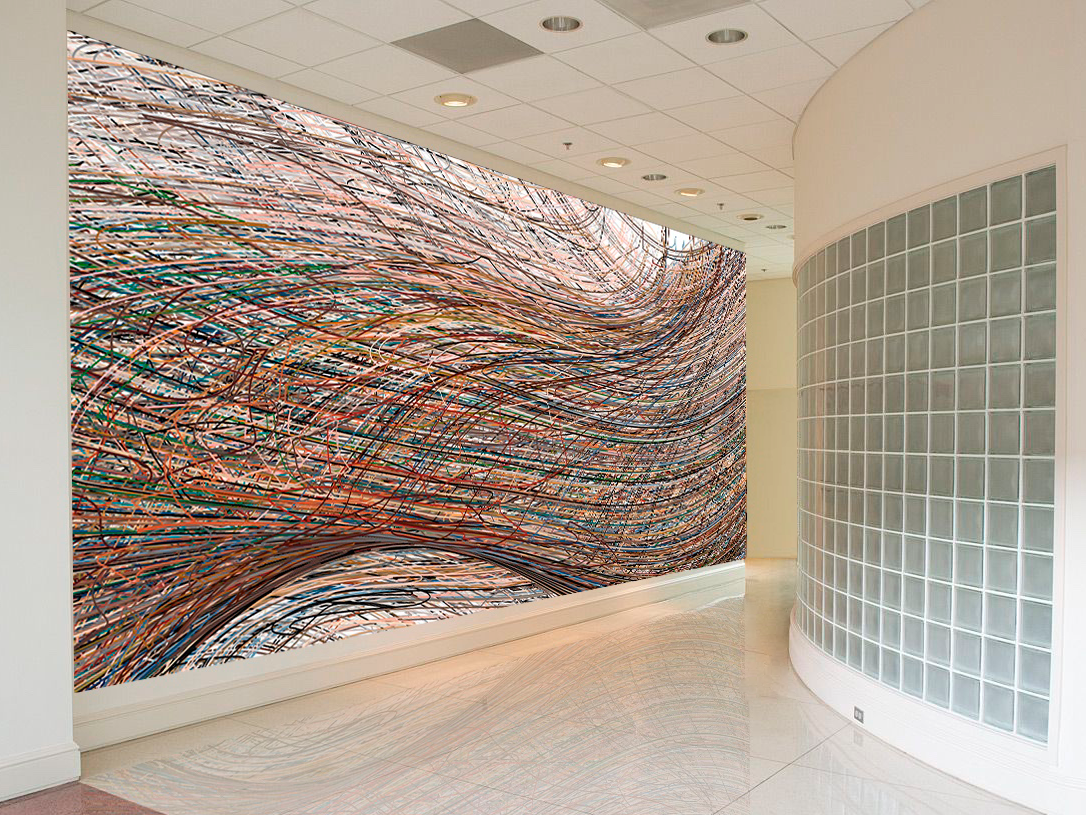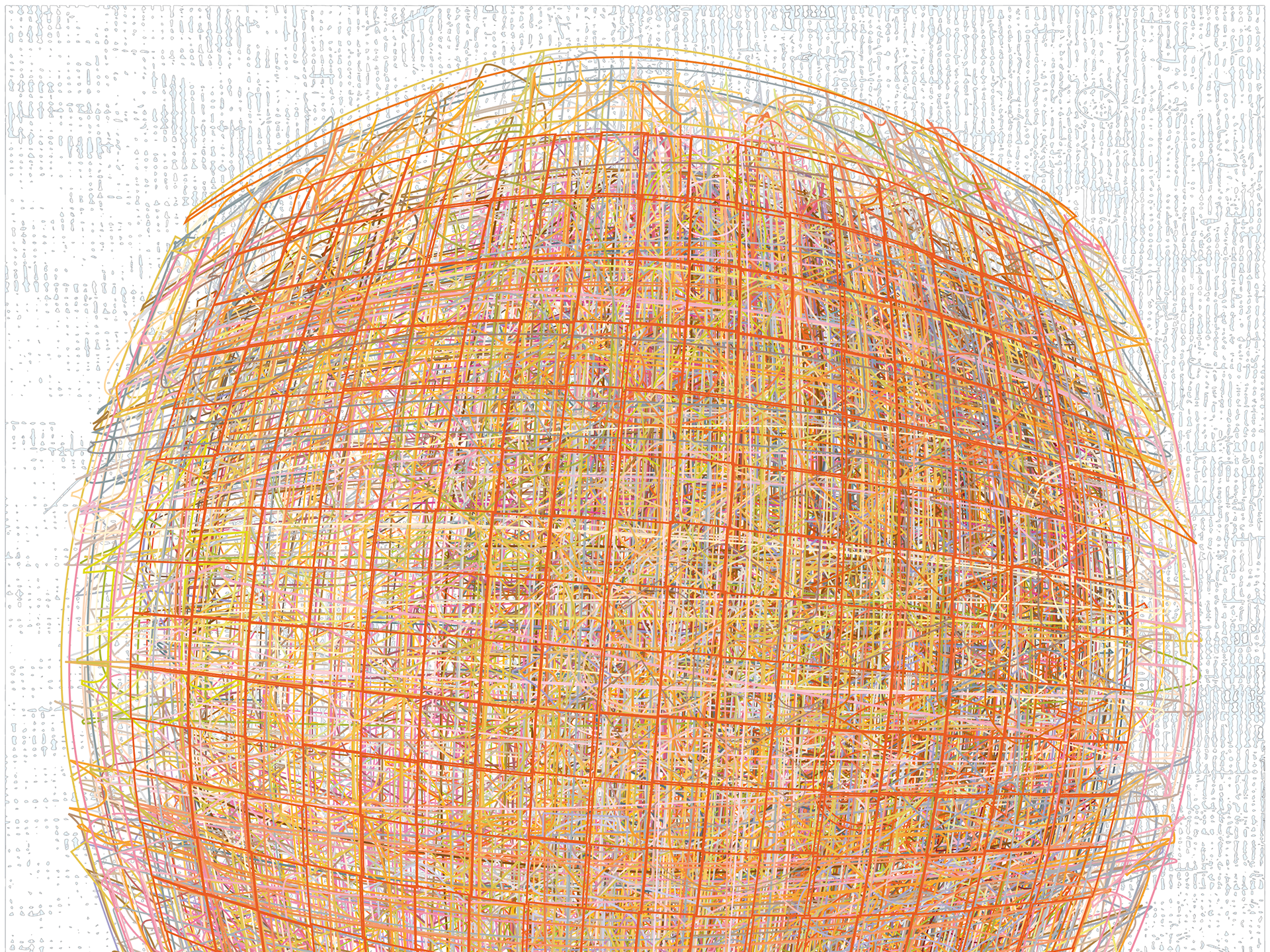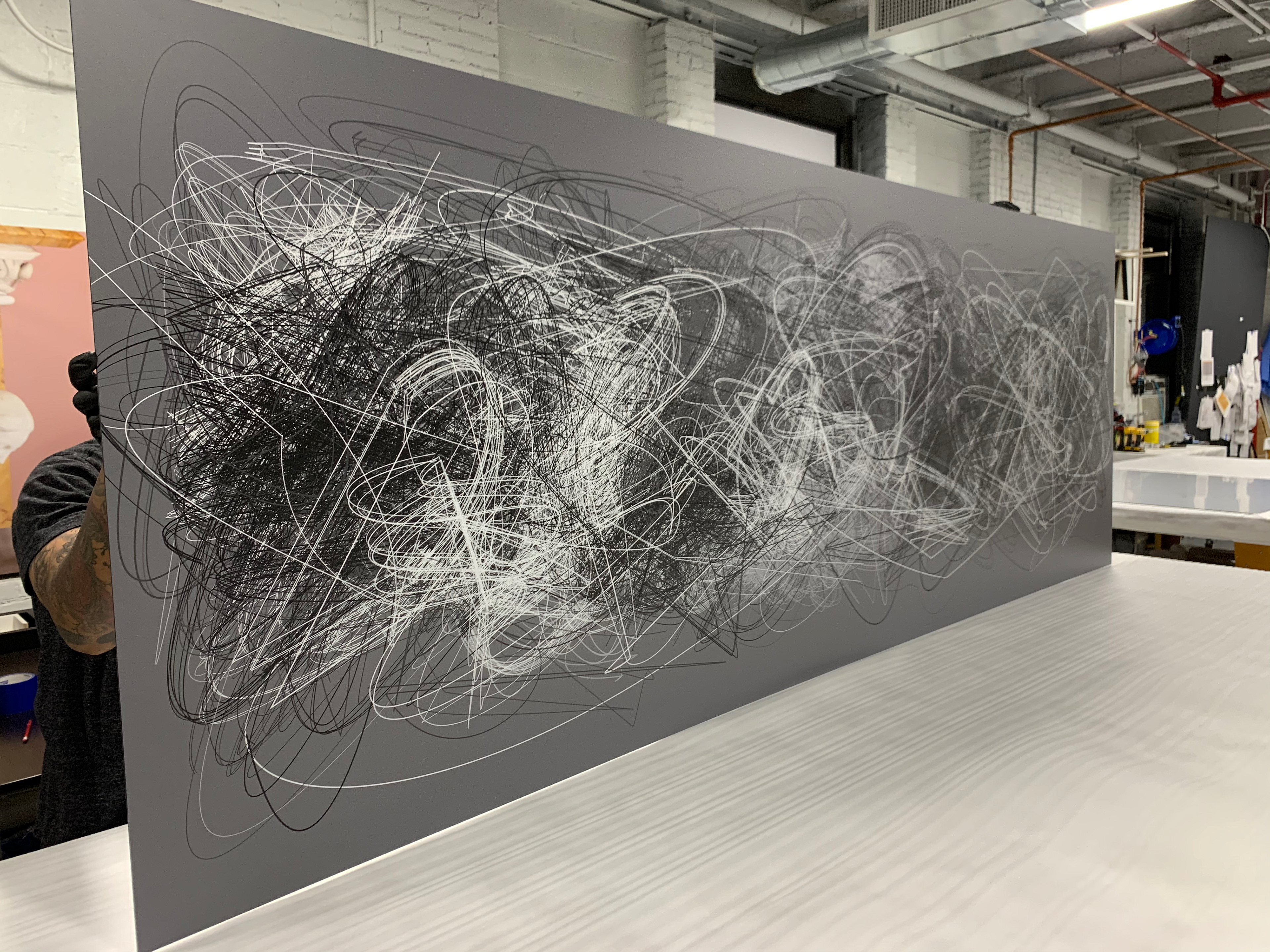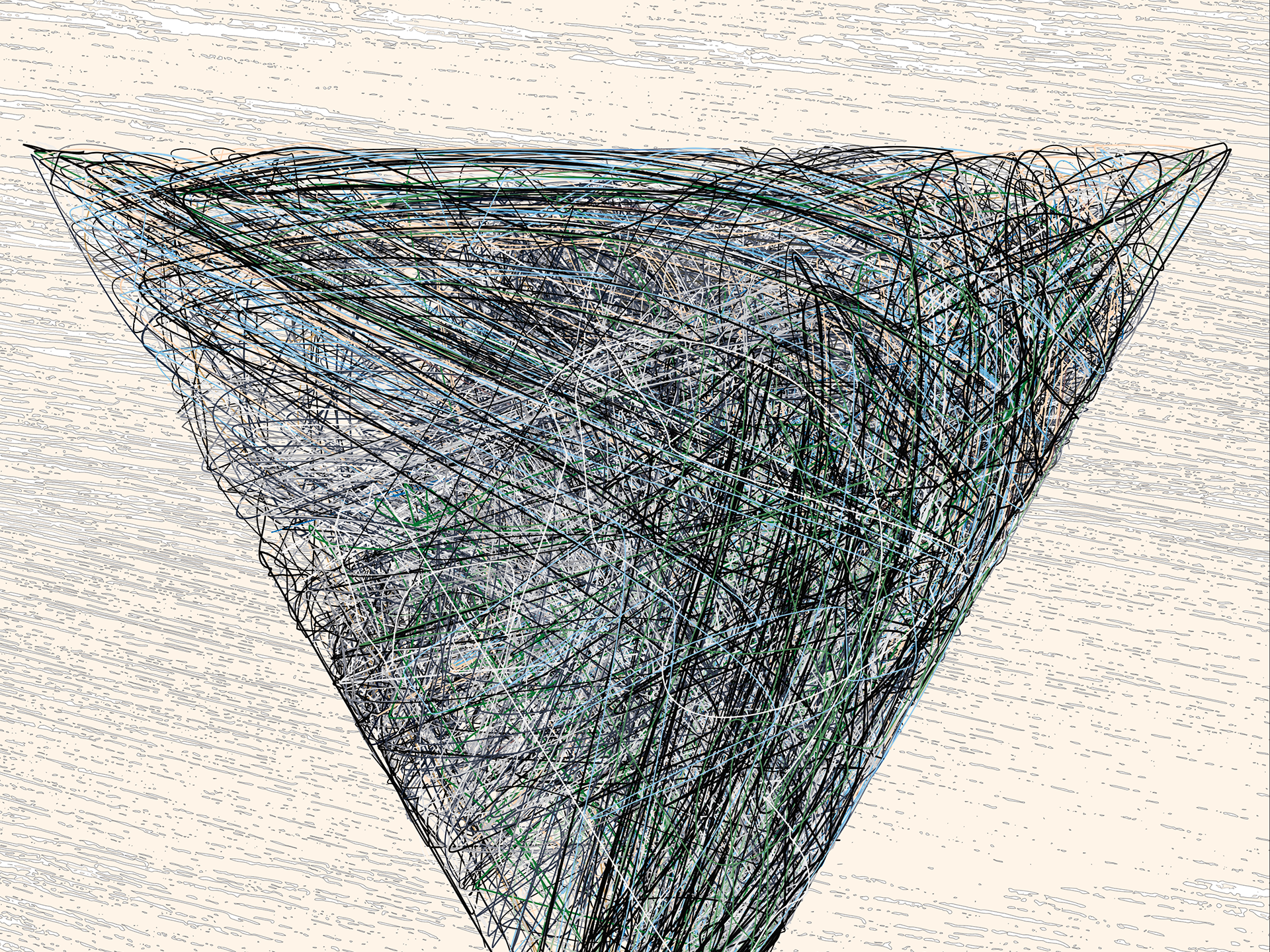This is an ongoing series concerning our climate and the ongoing conditions of climate change. Writings about oceans, rivers, the atmosphere, forests and other basic life support systems of Earth make up the starting structure of the paintings. I'm not using automated algorithms to generate these artworks. Changes to the text are done by hand, line by line. Although vector art software works internally through mathematical algorithms to function, nothing happens unless I make a move manually.
Here is some of the altered text:
Moskstraumen or Moske-stroom is an unusual system of whirlpools in the open seas in the Lofoten Islands off the Norwegian coast. It is the second strongest whirlpool in the world with flow currents reaching speeds as high as 32 km/h (20 mph).[4] This is supposedly the whirlpool depicted in Olaus Magnus' map, labeled as "Horrenda Caribdis" (Charybdis).
The Moskstraumen is formed by the combination of powerful semi-diurnal tides and the unusual shape of the seabed, with a shallow ridge between the Moskenesøya and Værøy islands which amplifies and whirls the tidal currents.[7]
The fictional depictions of the Maelstrom by Edgar Allan Poe, Jules Verne, and Cixin Liu describe it as a gigantic circular vortex that reaches the bottom of the ocean, when in fact it is a set of currents and crosscurrents with a rate of 18 km/h (11 mph). Poe described this phenomenon in his short story A Descent into the Maelstrom, which during 1841 was the first to use the word "maelstrom" in the English language; in this story related to the Lofoten Maelstrom, two fishermen are swallowed by the maelstrom while one survives. Considered to be his first work of science fiction.
Maelstrom 006 Uv polymer on canvas 38 x 120 in. 2022
Maelstrom 005 Uv polymer on canvas 38 x 123 in. 2022
Maelstrom 39 B Uv polymer on canvas 38 x 106 in. 2022
Maelstrom Charybdis dye sublimation on canvas 89 x 212 in. 2011
Maelstrom 74 B Uv polymer on canvas 38 x 123 in. 2022
Maelstrom 76 Uv polymer on canvas 38 x 106 in. 2022









